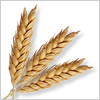Ваш кошик

 World: World’s leading malting barley exporting countries list remains unchanged
World: World’s leading malting barley exporting countries list remains unchanged
Australia might be a minnow when it comes to producing barley but it spars well above its weight in the malting grain market, Weekly Times Now reported on October 23.
Australia last year harvested a 6.8 million tonne barley crop out of total global production of 129 million tonnes - 5 per cent of world production.
But it is consistently the world's dominant player in malting exports.
Last year, 2.1 million tonnes of high value malting barley - 31 per cent of annual barley production - were produced.
All but 100,000 tonnes were exported, according to Alain Caekaert, of European maltster Malteurop.
Mr Caekaert said these figures did not include the "fair average quality" barley sought by Chinese maltsters.
The FAQ grade is feed barley which meets the minimum 95 per cent germination percentage but lacks the quality characteristics of genuine "malting" grain.
In contrast, the 28-member European Union produced 54 million tonnes of barley, or about 42 per cent of global production last year.
Of that, 12.2 million tonnes (23 per cent) was malting barley, grown mostly in France, Germany, the UK and Denmark.
Mr Caekaert said almost all of the EU's malting barley crop is used to supply its own maltsters.
Speaking at this year's Australian Grains Industry Conference, he said only 650,000 tonnes of European malting barley were exported, most notably to Russia, a small amount to China and Ukraine and some to South Africa.
He said Argentina was traditionally the second biggest exporter, sending 900,000 tonnes on to the international market last year, mostly to other countries in South America.
Canada was a top five malting barley exporter, selling about 450,000 tonnes last year.
It largely supplied the US.
Mr Caekaert said Ukraine was the only other major exporter, shipping 600,000 tonnes last year.
But it was one of a number of countries facing a downward trend in total barley production.
He said Canada, Russia and the EU were also experiencing a downturn in barley production.
Mr Caekert said that was part of a decline in the area sown to the crop going back decades. 20 years ago, the area sown to barley in the world was 73 million ha. By 2003, that had fallen to 58 million ha and this year, 51 million ha was planted. "The decrease is concerning," he said.
Mr Caekaert said Australian barley production was relatively stable, while Argentina was the only major supplier with rising output.
Part of the problem was competing interest in sowing alternative crops, particularly corn.
"Ukraine used to flood the market with barley at harvest time," he said. "But it doesn't produce enough now."
In the past decade or more, grain analysts have said they expected Ukraine to become a powerhouse cereal producing nation if it fixed up farm management and storage, transport and handling issues.
But last week, the US Grains Council said Ukrainian farmers had put most of their efforts into producing corn rather than barley.
Two years ago, Ukraine grew about 11.7 million tonnes of corn, according to USGC data.
This year, it produced about 26 million tonnes and next year, the country's farmers are tipped to harvest 31 million tonnes of corn.
By comparison, Ukrainian farmers produced a seven million tonne barley crop in 2012, of which 2.1 million tonnes are exported.
Назад





